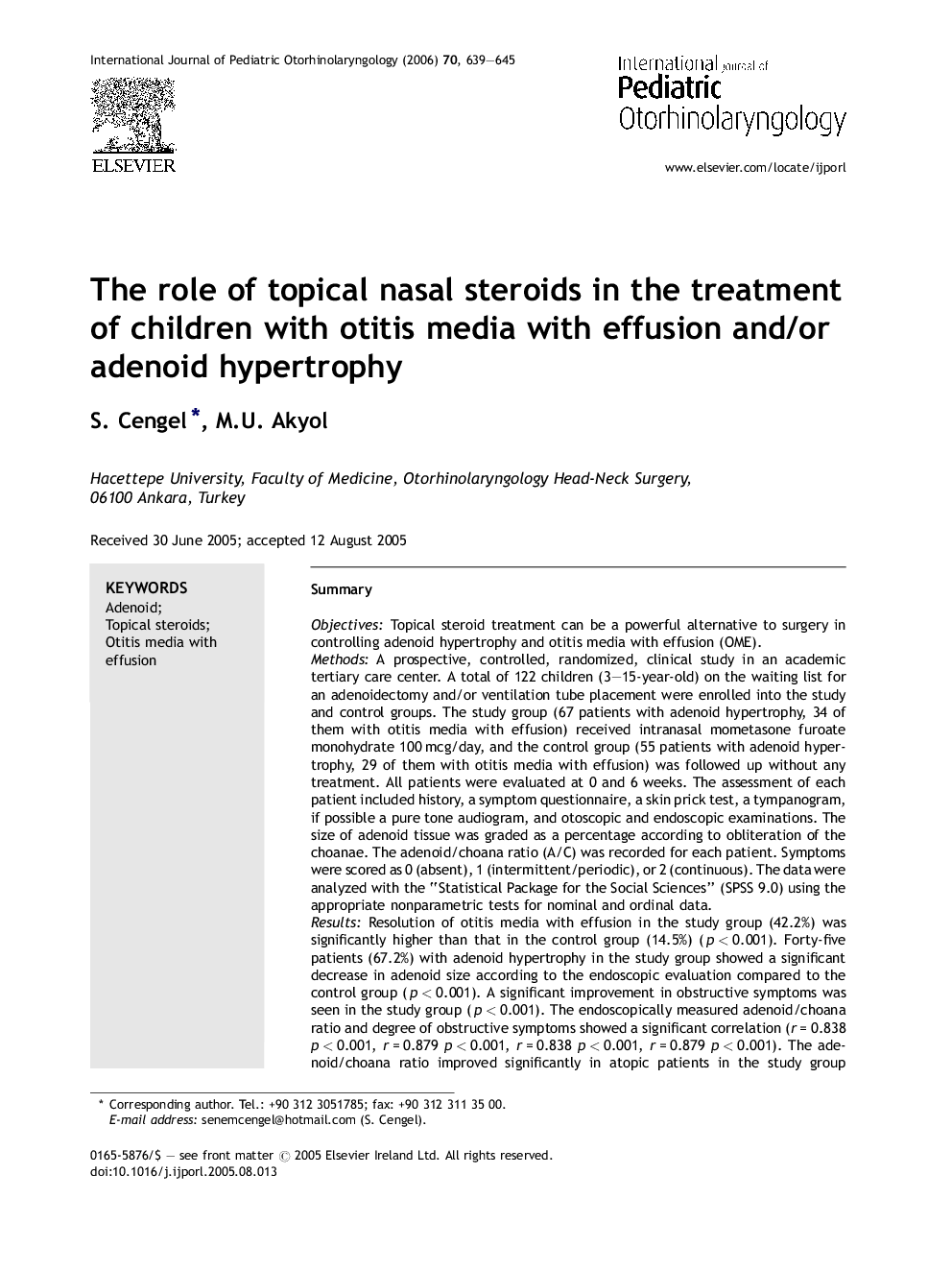| Article ID | Journal | Published Year | Pages | File Type |
|---|---|---|---|---|
| 4114749 | International Journal of Pediatric Otorhinolaryngology | 2006 | 7 Pages |
SummaryObjectivesTopical steroid treatment can be a powerful alternative to surgery in controlling adenoid hypertrophy and otitis media with effusion (OME).MethodsA prospective, controlled, randomized, clinical study in an academic tertiary care center. A total of 122 children (3–15-year-old) on the waiting list for an adenoidectomy and/or ventilation tube placement were enrolled into the study and control groups. The study group (67 patients with adenoid hypertrophy, 34 of them with otitis media with effusion) received intranasal mometasone furoate monohydrate 100 mcg/day, and the control group (55 patients with adenoid hypertrophy, 29 of them with otitis media with effusion) was followed up without any treatment. All patients were evaluated at 0 and 6 weeks. The assessment of each patient included history, a symptom questionnaire, a skin prick test, a tympanogram, if possible a pure tone audiogram, and otoscopic and endoscopic examinations. The size of adenoid tissue was graded as a percentage according to obliteration of the choanae. The adenoid/choana ratio (A/C) was recorded for each patient. Symptoms were scored as 0 (absent), 1 (intermittent/periodic), or 2 (continuous). The data were analyzed with the “Statistical Package for the Social Sciences” (SPSS 9.0) using the appropriate nonparametric tests for nominal and ordinal data.ResultsResolution of otitis media with effusion in the study group (42.2%) was significantly higher than that in the control group (14.5%) (p < 0.001). Forty-five patients (67.2%) with adenoid hypertrophy in the study group showed a significant decrease in adenoid size according to the endoscopic evaluation compared to the control group (p < 0.001). A significant improvement in obstructive symptoms was seen in the study group (p < 0.001). The endoscopically measured adenoid/choana ratio and degree of obstructive symptoms showed a significant correlation (r = 0.838 p < 0.001, r = 0.879 p < 0.001, r = 0.838 p < 0.001, r = 0.879 p < 0.001). The adenoid/choana ratio improved significantly in atopic patients in the study group (p < 0.05), whereas in atopic patients in the control group there was no change (p = 0.221).ConclusionNasal mometasone furoate monohydrate treatment can significantly reduce adenoid hypertrophy and eliminate obstructive symptoms. It is a useful alternative to surgery, at least in the short term, for otitis media with effusion.
